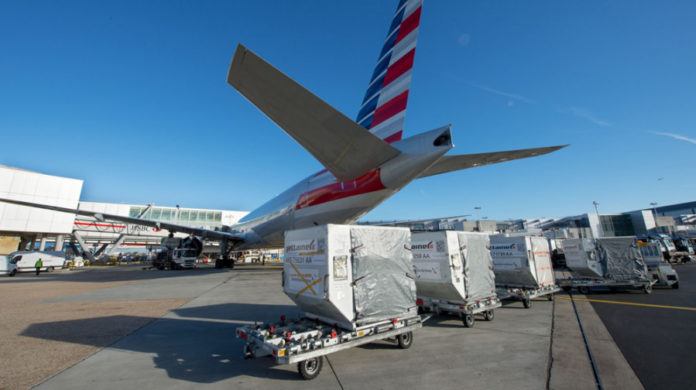

Heathrow Airport has unveiled its 10 step Blueprint for Sustainable Freight plan to reduce freight emissions while volumes continue to grow.
Non-executive chairman, Lord Deighton unveiled the plans at the British Chambers of Commerce International Trade Summit in Birmingham to address the environmental impact of cargo and how Heathrow plans to grow with expansion but not increase overall airport-related traffic on the road.
There are 2.75 million freight vehicle movements a year, the majority of which support airport cargo operations, and plans include an app for local forwarders to consolidate movements, airfield charging points and modernising cargo infrastructure.
Lord Deighton says: “Heathrow is dedicated to keeping the UK economy growing – but at the same time, we have pledged to be a sustainability leader and made promises to our local communities that we intend to keep.”
“The ten steps we have outlined today allow us to keep building on our cargo strength and role as Heathrow’s biggest port by value, while restricting the emissions and local impacts of freight vehicles.”
The move has been welcomed by Freight Transport Association director of global and European Policy, Chris Welsh, who says: “Heathrow’s Blueprint for Sustainable Freight is a collaborative and pioneering plan, by establishing a sustainable freight group, Heathrow will gain valuable insight from industry to develop procedures that are synergetic and will satisfy both Heathrow’s ambitious environmental goals as well as increasing the efficiency of freight operations in and around the airport. We look forward to working with them.”
The 10 points are:
• Launching an online load consolidation tool to consolidate freight loads in and out of Heathrow, reducing the number of trucks on the roads.
• A new cargo village to allow more direct trips to the airport, improving capacity and reducing shuttling movements around warehouses.
• Increase airside transhipment facilities to eliminate the need for goods to be transported landside to cargo areas or pass through control posts twice.
• Consolidate facilities to reduce traffic on local roads, building on the success of Heathrow’s retail consolidation centre, which reduced the number of supplier vehicles on the roads entering the airport by 42 per cent.
• A local code of conduct for freight operators focusing on behaviour including inappropriate parking, littering, vehicle routes and aggressive driving.
• Integrated enforcement with local highway authorities and boroughs to address issues rather than displacing them.
• Delivering a strategic freight plan with local authorities to prioritise efficient cargo operations including identifying appropriate locals for freight facilities
• Create a Sustainable Freight Group, which will meet twice a year to support the development of initiatives to reduce emissions from freight activity
• Trial low emission vehicles and technology on local roads including promoting the use of electric vehicles
• An ultra low emission zone for airside vehicles with the aim of reducing nitrogen oxide emissions from airside vehicles by 70 per cent by 2025 compared to 2013.









